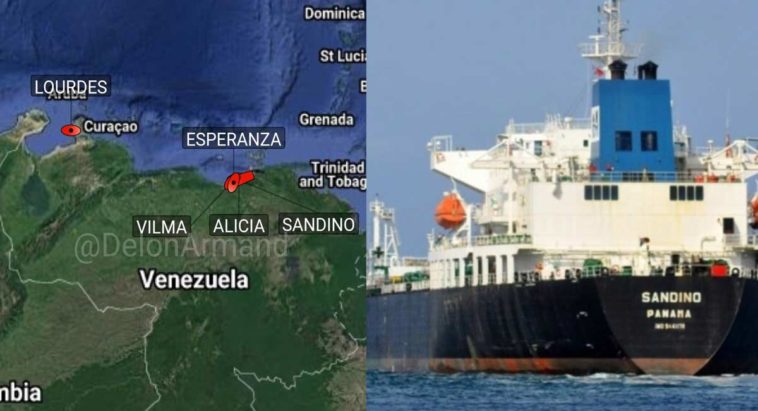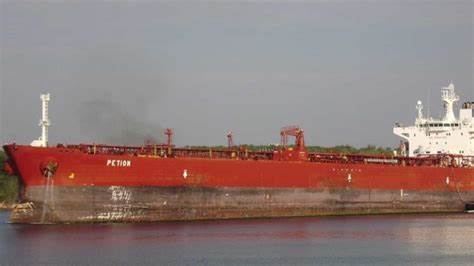CUBA BUSCA PETROLEO EN EUROPA, RUSIA, REPUBLICA DOMINICANA Y TRINIDAD Y TOBAGO. PHOTOS.
EL GOBIERNO de Cuba compró en las últimas dos semanas más de tres millones de barriles de crudo y combustibles de Venezuela, petróleo de Rusia, diésel europeo y gas licuado de petróleo de República Dominicana y Trinidad y Tobago, para un promedio de unos 230.000 barriles por día (bpd), como medida de contingencia tras el incendio que destruyó buena parte de la base de supertanqueros de Matanzas.
De acuerdo con la empresa Refinitiv Eikon, La Habana está utilizando una combinación de transferencias de barco a barco y almacenamiento flotante de petróleo, buscando aliviar la escasez de combustible y los cortes de energía tras el incendio, según mostraron datos de rastreo de embarcaciones citados por Reuters.
El Gobierno de la Isla habría aumentado las importaciones de combustible de Europa y el Caribe, mientras que otros 200.000 barriles de fuel oil venezolano para generación de energía llegarán a fines de este mes en el buque tanque de bandera cubana Petion, operado por el conglomerado de los militares GAESA, según los cronogramas de la empresa estatal venezolana PDVSA.
La Habana también está utilizando un tanquero tipo Panamax Equality para recibir petróleo de buques más grandes originalmente destinados a Matanzas, que ha permanecido anclado frente a la bahía de esa ciudad, según los datos de monitoreo del buque, proporcionando almacenamiento flotante.
Otros barcos con importaciones —Vilma, Lourdes, Sandino y Esperanza—- descargaron sus suministros de combustible en los puertos de Antilla, en Holguín, y Cienfuegos, según iguales fuentes.
Los atracaderos de Matanzas para cargar y descargar grandes tanqueros están operativos, pero permanecen desconectados de las instalaciones de almacenamiento, mientras las autoridades evalúan los daños en las tuberías, estaciones de bombeo y tanques, aseguró Jorge Piñón, director del programa de energía para América Latina y el Caribe de la Universidad de Texas, en Austin.
Miguel Díaz-Canel dijo hace dos semanas que estaba evaluando la disponibilidad de almacenamiento y refinación tras el incendio para poner en funcionamiento un nuevo sistema que permita descargar y procesar rápidamente los combustibles que ingresan al país.
Pese a ello, el miércoles en la noche el ministro de Energía y Minas, Liván Arronte Cruz, dijo en el espacio televisivo de la Mesa redonda que entre los factores que provocan los apagones extremos que sufren los cubanos están las limitaciones con el combustible debido al incremento de los precios y al embargo de EEUU.
“El combustible hay que traerlo desde Asia, desde Europa, no puede conseguirse en la región”, comentó, obviando los millonarios envíos mensuales desde Venezuela y sin mencionar estas compras ahora reveladas.
Los apagones han provocado el incremento de los estallidos sociales en toda Cuba, que tuvieron a fines de la semana pasada su clímax en Nuevitas, Camagüey, donde cientos de residentes se manifestaron contra el régimen durante tres días consecutivos, y acabaron enfrentándose a las fuerzas represivas enviadas para reprimirlos.
Asimismo, hay un incremento de extraños incendios y ataques contra instalaciones estatales en toda la Isla, como evidencia del crítico momento que vive la relación entre los cubanos y sus autoridades.
CUBA LOOKS FOR OIL IN EUROPE, RUSSIA, THE DOMINICAN REPUBLIC, AND TRINIDAD AND TOBAGO. PHOTOS.
THE GOVERNMENT of Cuba bought in the last two weeks more than three million barrels of crude oil and fuels from Venezuela, oil from Russia, European diesel, and liquefied petroleum gas from the Dominican Republic and Trinidad and Tobago, for an average of about 230,000 barrels per day (BPD), as a contingency measure after the fire that destroyed a large part of the supertanker base in Matanzas.
According to Refinitiv Eikon, Havana is using a combination of ship-to-ship transfers and floating oil storage, seeking to alleviate fuel shortages and power outages in the aftermath of the fire, ship-tracking data cited by the U.S. showed. Reuters.
The Island Government would have increased fuel imports from Europe and the Caribbean, while another 200,000 barrels of Venezuelan fuel oil for power generation will arrive at the end of this month on the Cuban-flagged tanker Petion, operated by the conglomerate of the military GAESA, according to the schedules of the Venezuelan state company PDVSA.
Havana is also using a Panamax Equality tanker to receive oil from larger vessels originally destined for Matanzas, which have remained anchored off Matanzas bay, according to vessel monitoring data, providing floating storage.
Other ships with imports —Vilma, Lourdes, Sandino, and Esperanza— unloaded their fuel supplies in the ports of Antilla, Holguín, and Cienfuegos, according to the same sources.
Matanzas berths for loading and unloading large tankers are operational, but remain disconnected from storage facilities, while authorities assess damage to pipelines, pumping stations, and tanks, said Jorge Piñón, director of the energy program for Latin America. and the Caribbean from the University of Texas at Austin.
Miguel Díaz-Canel said two weeks ago that he was evaluating the availability of storage and refining after the fire to put into operation a new system that allows the rapid unloading and processing of fuels entering the country.
Despite this, on Wednesday night the Minister of Energy and Mines, Liván Arronte Cruz, said on the television program of the Round Table that among the factors that cause the extreme blackouts suffered by Cubans are the limitations with fuel due to increase in prices and the US embargo.
“The fuel must be brought from Asia, from Europe, it cannot be obtained in the region,” he commented, ignoring the millionaire monthly shipments from Venezuela and without mentioning these now revealed purchases.
The blackouts have led to an increase in social unrest throughout Cuba, which climaxed at the end of last week in Nuevitas, Camagüey, where hundreds of residents demonstrated against the regime for three consecutive days, and ended up confronting the repressive forces. sent to suppress them.
Likewise, there is an increase in strange fires and attacks against state facilities throughout the island, as evidence of the critical moment in the relationship between Cubans and their authorities.
Agencies/ DDC/ Extractos/ Excerpts/ Internet Photos/ Arnoldo Varona/ www.TheCubanHistory.com
THE CUBAN HISTORY, HOLLYWOOD.



 CUBA BUSCA petroleo en Europa, Rusia, Republica Dominicana y Trinidad y Tobago. Photos. * CUBA LOOKS for Oil in Europe, Rusia, the Dominican Republic, and Trinidad y Tobago. Photos.
CUBA BUSCA petroleo en Europa, Rusia, Republica Dominicana y Trinidad y Tobago. Photos. * CUBA LOOKS for Oil in Europe, Rusia, the Dominican Republic, and Trinidad y Tobago. Photos.




